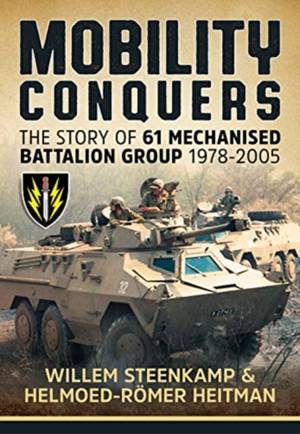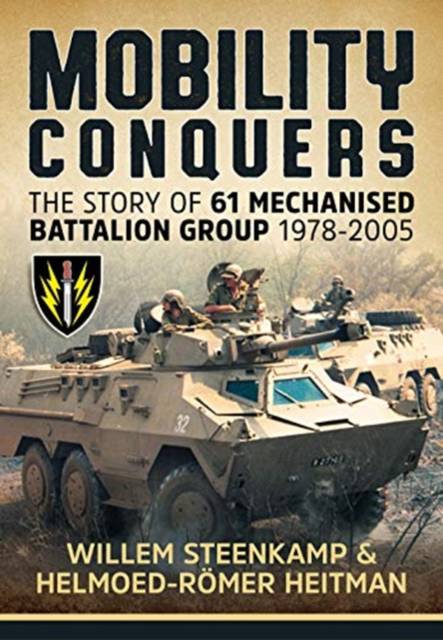
- Retrait gratuit dans votre magasin Club
- 7.000.000 titres dans notre catalogue
- Payer en toute sécurité
- Toujours un magasin près de chez vous
- Retrait gratuit dans votre magasin Club
- 7.000.000 titres dans notre catalogue
- Payer en toute sécurité
- Toujours un magasin près de chez vous
Mobility Conquers
The Story of 61 Mechanised Battalion Group 1978-2005
Willem Steenkamp, Helmoed-Romer Heitman
Livre relié | Anglais
97,95 €
+ 195 points
Description
More than two years in the writing, this book is the warts-and-all story of the birth, career and death of the South African Defence Force's 61 Mechanised Battalion Group (1979-2005) - generally acknowledged as the best fighting unit in Africa in its time. '61 Mech' was structured as a combined-arms unit with integral infantry, armoured and artillery components - the first in Africa - and arduously trained in a fast-moving mobile warfare doctrine which was not based on adapted European tactics, but was specifically designed for fighting modern bush wars in the forbiddingly difficult African battle-space. It was mounted in various versions of the Ratel armoured fighting vehicle, which was locally designed for African campaigning in frequently indescribable terrain conditions, and whose cross-country mobility and heavy firepower provided the means for applying the new doctrine. Backing it up were heavy weapons of local design, such as the world-class G-5 155mm artillery piece - then the longest-ranged medium gun in the world - and its huge self-propelled wheeled version: the G-6. Led by some of the brightest officers in the army, '61 Mech' played a major role in the often hard-fought incursions into Angola between 1978 and 1988 and won all its battles - even though the South Africans were always vastly outnumbered by the armed forces of Angola, with their abundant Soviet weaponry and Russian and Cuban advisors (and usually with an unfavourable air situation). Written in an easy-to-read narrative style by two veteran military authors, the book includes many personal accounts by officers and men of '61 Mech' - some of them in harrowing detail - and describes the preparations for the various operations and the ongoing evolution of both the doctrine and the weaponry and equipment; but it also covers the broader context, including revealing glimpses into the hitherto almost unknown Angolan/Soviet/Cuban side of the conflict. Among other things, it explains how and why the SADF became involved in the struggle against the South West African People's Organisation; pin-points for the first time the moment when the counter-insurgency campaign in SWA/Namibia became entangled with the Angolan Civil War; and objectively analyses the much-debated question of whether there was ever a 'Battle for Cuito Cuanavale'. It is also salted with short snippets of information which help to make it an entertaining read for people from anywhere in the world. Backing up the narrative are many specially-drawn maps and a large number of photographs - of which most are not generic, but directly related to the events in the narrative. For anyone needing a single blueprint on how to fight a successful conventional war in Africa, this is the book to read.
Spécifications
Parties prenantes
- Auteur(s) :
- Editeur:
Contenu
- Nombre de pages :
- 1152
- Langue:
- Anglais
Caractéristiques
- EAN:
- 9781912866076
- Date de parution :
- 19-11-19
- Format:
- Livre relié
- Format numérique:
- Genaaid
- Dimensions :
- 171 mm x 248 mm







